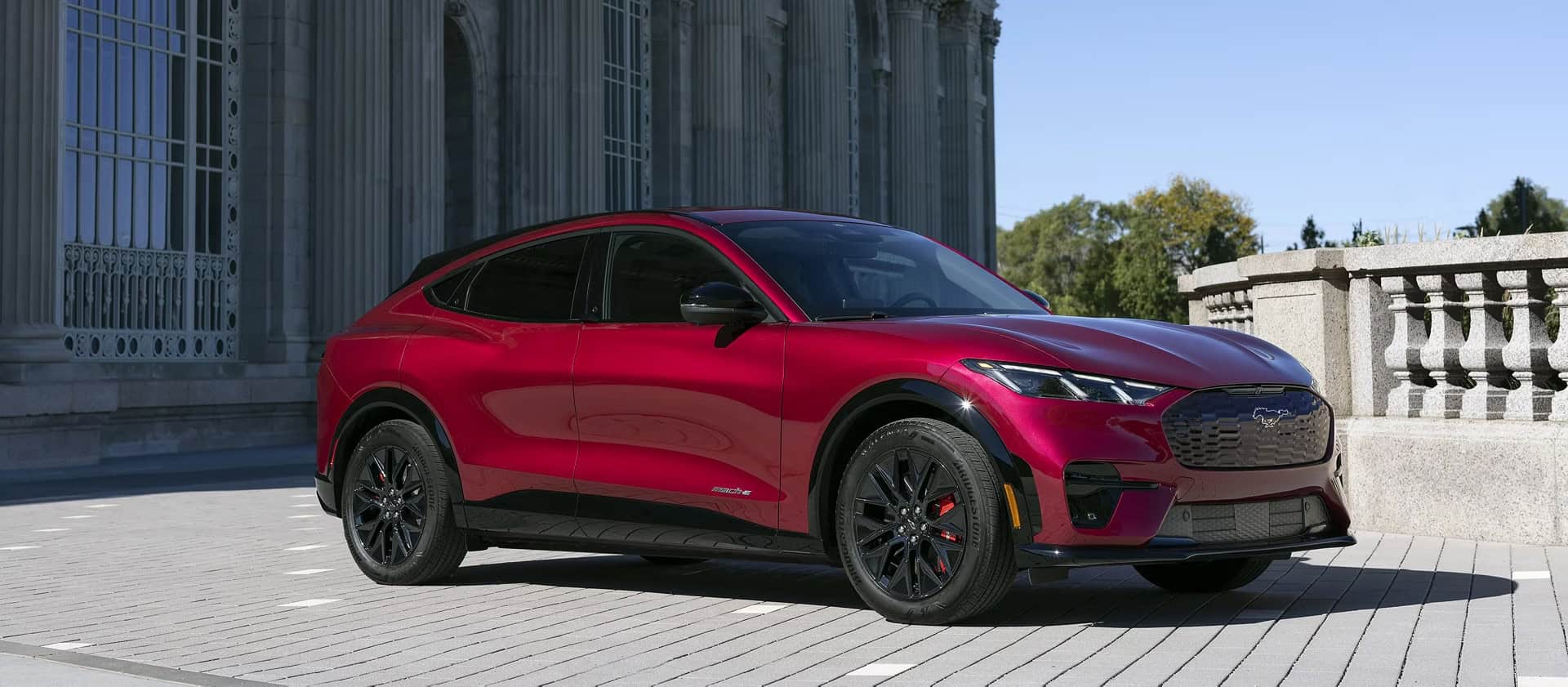How Does Direct Injection in the 2025 Ford Explorer Work?
The Ford Explorer continues to showcase advanced engine technology, with direct injection playing a crucial role in its powertrains. This article delves into the intricacies of direct injection, its implementation in the Explorer engines, and the benefits it brings to performance, efficiency, and emissions. What is Direct Injection? Direct injection, also known as gasoline direct … Continued
The Ford Explorer continues to showcase advanced engine technology, with direct injection playing a crucial role in its powertrains. This article delves into the intricacies of direct injection, its implementation in the Explorer engines, and the benefits it brings to performance, efficiency, and emissions.

What is Direct Injection?
Direct injection, also known as gasoline direct injection (GDI) or petrol direct injection (PDI), is an advanced fuel delivery system used in modern internal combustion engines. Unlike traditional port fuel injection systems, direct injection introduces fuel directly into the combustion chamber of each cylinder.
Key Components of Direct Injection
- High-Pressure Fuel Pump: Generates the high fuel pressure required for direct injection, typically between 100 and 200 bar.
- Fuel Rail: Distributes high-pressure fuel to the injectors.
- Direct Injectors: Precision-engineered nozzles that spray fuel directly into the combustion chamber.
- Engine Control Unit (ECU): Manages the timing and duration of fuel injection based on various sensor inputs.
- High-Pressure Fuel Lines: Specially designed to withstand the high pressures in the system.
Direct Injection in the 2025 Ford Explorer
The Ford Explorer offers two EcoBoost engine options, both utilizing direct injection technology:
- 1. 2.3L EcoBoost I-4
- 2. 3.0L EcoBoost V6
Both engines incorporate direct injection, a key feature of EcoBoost technology. This technology combines turbocharging, direct injection, and variable valve timing to optimize performance and efficiency.
Implementation in the 2.3L EcoBoost
In the 2.3L four-cylinder engine, direct injection works in harmony with a twin-scroll turbocharger. The system operates at up to 200 bar pressures, allowing for precise fuel delivery. The injectors are positioned centrally in the combustion chamber, providing optimal fuel atomization and mixture formation.
Implementation in the 3.0L EcoBoost V6
The larger 3.0L V6 engine uses a similar direct injection system but with some modifications to handle the increased fuel flow requirements. The system operates at slightly higher pressures, up to 250 bar, to ensure efficient fuel atomization across the wider rev range of this performance-oriented engine.
The Direct Injection Process
- Intake Stroke: As the piston moves downward, the intake valve opens, allowing air to enter the cylinder. Unlike in port injection systems, no fuel is introduced at this stage.
- Compression Stroke: As the piston moves upward, compressing the air, the direct injector sprays fuel directly into the combustion chamber. The timing of this injection can vary based on engine load and speed.
- Power Stroke: The spark plug ignites the compressed air-fuel mixture, driving the piston downward and producing power.
- Exhaust Stroke: The exhaust valve opens, and the piston moves upward, expelling the combustion gases.
Benefits of Direct Injection in the Explorer
Improved Fuel Efficiency
Direct injection allows for more precise control over fuel delivery, improving fuel efficiency. In the 2025 Explorer, this translates to an estimated fuel economy of:
- 2.3L EcoBoost: 10.0 L/100km combined
- 3.0L EcoBoost: 11.2 L/100km combined
These figures represent a significant improvement over earlier non-direct injection engines.
Enhanced Performance
The precise fuel control and cooling effect of direct injection allow for higher compression ratios, boosting performance. In the Explorer, this contributes to impressive power outputs:
- 2.3L EcoBoost: 300 horsepower and 420 Nm of torque
- 3.0L EcoBoost: 400 horsepower and 563 Nm of torque
Reduced Emissions
Direct injection helps reduce emissions by allowing for more complete combustion, which is particularly important for meeting stringent emissions standards, such as Euro 6d and CARB LEV III.
Better Cold-Start Performance
Direct injection allows multiple injection events per cycle, improving cold-start emissions and reducing engine warm-up time.
Reduced Knock Tendency
The cooling effect of direct injection reduces the likelihood of engine knock, allowing for more advanced ignition timing and better performance.
Challenges and Solutions
While direct injection offers numerous benefits, it also presents some challenges that Ford has addressed in the Explorer:
Carbon Buildup
Direct injection can lead to carbon buildup on intake valves due to the lack of fuel washing over them. Ford has implemented several strategies to mitigate this:
- Improved crankcase ventilation systems
- Optimized valve timing to promote self-cleaning
- Recommended use of top-tier fuels with detergent additives
Increased Complexity and Cost
Direct injection systems are more complex and costly than traditional port injection systems. However, the benefits in terms of performance and efficiency outweigh the additional cost for most consumers.
Higher Fuel Pressure Requirements
The high fuel pressures required for direct injection (up to 250 bar in the 3.0L EcoBoost) necessitate more robust fuel system components. Ford has invested in developing durable high-pressure pumps and fuel lines to ensure long-term reliability.
Potential for Increased Particulate Emissions
Direct injection can sometimes increase particulate emissions, particularly during cold starts. Ford has addressed this through:
- Optimized injection strategies
- Advanced exhaust after-treatment systems
- Gasoline particulate filters in some markets
Future Developments
As Ford continues to refine its EcoBoost technology, we can expect further advancements in direct injection for future Explorer models:
- Higher Injection Pressures: Future systems may operate at even higher pressures, potentially up to 350 bar, for improved fuel atomization and mixture formation.
- Variable Pressure Systems: Development of systems that can vary fuel pressure based on engine load and speed for optimized performance across all conditions.
- Integration with Electrification: As Ford moves towards increased electrification, direct injection will play a crucial role in hybrid powertrains, working in concert with electric motors for maximum efficiency.
- Advanced Materials: Continued development of injector nozzle materials and coatings to improve durability and reduce deposit formation.
- Predictive Control Strategies: Implementation of AI and machine learning algorithms to predict optimal injection timing and duration based on driving patterns and conditions.
Maintenance Considerations
While direct injection systems are generally robust, proper maintenance is crucial for long-term reliability:
- Fuel Quality: Use of high-quality, top-tier fuels is recommended to minimize deposit formation.
- Oil Changes: Regular oil changes with the recommended grade (typically 5W-30 synthetic for the Explorer) help prevent oil degradation and subsequent deposit formation.
- Intake Cleaning: Some owners opt for periodic intake valve cleaning services to prevent excessive carbon buildup.
- Fuel System Maintenance: Use of fuel system cleaners or periodic fuel system service can help maintain injector performance.
Economic Impact
The implementation of direct injection technology in the Ford Explorer has economic implications for both consumers and the manufacturer:
- Initial Cost: The advanced technology contributes to the Explorer pricing depending on trim and options.
- Fuel Savings: Improved efficiency can lead to significant fuel cost savings over the vehicle’s lifetime.
- Maintenance Costs: While direct injection systems are generally reliable, potential issues like carbon buildup may lead to additional maintenance costs over time. However, these are often offset by the fuel savings and improved performance.
- Resale Value: The advanced technology and improved efficiency can improve resale values. The Explorer has historically maintained strong resale value, with 3-year-old models often retaining 60-65% of their original value.
2025 Ford Explorer: Performance and Efficiency
Direct injection technology plays a crucial role in the Ford Explorer powertrains, contributing significantly to its performance, efficiency, and emissions compliance. Direct injection allows Ford to extract maximum performance from smaller, more efficient engines by controlling fuel delivery and enabling higher compression ratios.
While the technology does present some challenges, such as potential carbon buildup and increased system complexity, the benefits far outweigh these concerns for most consumers. The improved fuel efficiency, enhanced performance, and reduced emissions align well with modern automotive trends and consumer preferences.
The Ford Explorer, with its advanced direct injection EcoBoost engines, represents the current pinnacle of Ford engine technology. It offers a compelling blend of performance, efficiency, and technology that positions it strongly in the competitive midsize SUV market. As automotive technology evolves, direct injection will remain a key component in the Ford powertrain strategy, helping meet increasingly stringent emissions regulations while satisfying consumer demands for power and efficiency.



